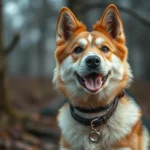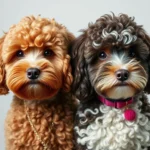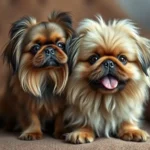
Dogs have been companions to humans for thousands of years, and their diversity in breeds is a testament to their adaptability and the unique characteristics that each breed possesses. Among these breeds, the Retro Pug stands out as a delightful and charming canine, capturing the hearts of dog lovers everywhere. This article dives deep into the world of the Retro Pug, exploring its history, physical traits, temperament, care requirements, health considerations, training, and how to find one.
Understanding Dog Breeds
Definition of Dog Breeds
A dog breed is a specific strain of domestic dogs that share common characteristics, such as size, appearance, and behavior. These traits are often the result of selective breeding, aimed at enhancing specific qualities that make each breed unique. Understanding the breed characteristics is crucial for potential dog owners, as it helps in predicting the dog’s behavior, health needs, and compatibility with family lifestyles.
Overview of Dog Breed Categories
Dog breeds are typically categorized into various groups based on their characteristics and functions. The main categories include:
- Sporting: Dogs bred for hunting and retrieving game.
- Hound: Dogs skilled in hunting due to their keen sense of smell.
- Working: Dogs that assist humans in tasks such as guarding and pulling.
- Terrier: Energetic dogs known for their feisty nature.
- Toy: Small breeds bred primarily for companionship.
- Non-sporting: A diverse group with varied characteristics.
- Herding: Dogs that assist in herding livestock.
- Miscellaneous: Breeds awaiting official recognition.
The Retro Pug falls under the Toy category, characterized by its small size and affectionate nature, making it an ideal companion for families and individuals alike.
The Retro Pug: A Unique Breed
History of the Retro Pug
The Retro Pug is a relatively new breed, developed to evoke the classic characteristics of the traditional Pug while enhancing certain traits. The breed was created by crossing the traditional Pug with other breeds, such as the Boston Terrier or French Bulldog, to achieve a more robust, healthier dog. This blend has led to a unique appearance and temperament, distinguishing the Retro Pug from its predecessors. The Retro Pug’s aim is to retain the quirky charm of the classic Pug while addressing some of the health issues that affect the traditional breed.
Physical Characteristics
The Retro Pug exhibits a blend of features inherited from its parent breeds:
- Size: Typically, Retro Pugs weigh between 14 to 20 pounds, making them compact and manageable for apartment living.
- Dimensions: They stand about 10 to 14 inches tall at the shoulder.
- Distinctive Features: Retro Pugs possess a flatter face, large round eyes, and a sturdy build. Their coat can vary in color, often seen in fawn, black, or brindle, with a soft texture that requires regular grooming.
Temperament and Behavior
The temperament of a Retro Pug is generally friendly, playful, and affectionate. They are known for their sociable nature, often forming strong bonds with their families. Here are some common traits:
- Social Behavior: Retro Pugs typically get along well with children and other pets, making them excellent family dogs.
- Common Behavioral Issues: Like any dog, they may exhibit behavioral issues such as separation anxiety or stubbornness. Early training and socialization are vital in curbing these tendencies.
- Training Tips: Positive reinforcement methods work best with Retro Pugs, as they respond well to praise and treats.
Care and Maintenance of Retro Pugs
Nutrition and Diet
Proper nutrition is essential for maintaining the health of your Retro Pug. It is recommended to feed them a balanced diet rich in protein, healthy fats, and essential vitamins. Look for high-quality dog food that is specifically formulated for small breeds. Common dietary restrictions and allergies may include wheat, soy, and certain proteins, so it’s important to monitor your dog’s reactions to their food.
Grooming Requirements
Grooming a Retro Pug is relatively straightforward:
- Brushing: Regular brushing helps minimize shedding, which can be moderate due to their short coat.
- Bathing: Bathing should be done as needed, usually every few months, to keep their coat clean and healthy.
- Nail Trimming: Regular nail trimming is essential to prevent discomfort and mobility issues.
- Dental Care: Dental hygiene is crucial for Retro Pugs, as small breeds are prone to dental diseases. Regular brushing and dental chews can help maintain oral health.
Exercise Needs
Despite their small size, Retro Pugs are energetic and require daily exercise. Recommended activities include:
- Short Walks: Two to three short walks daily help maintain their physical health.
- Playtime: Engaging in play sessions with toys can keep them mentally stimulated and physically active.
A well-exercised Retro Pug is generally happier and less prone to behavioral issues.
Health Considerations for Retro Pugs
Common Health Issues
While the Retro Pug is generally healthier than traditional Pugs, they can still be prone to certain breed-specific health concerns. Some common issues include:
- Respiratory Problems: Due to their brachycephalic (flat-faced) nature, they may experience breathing difficulties, particularly in hot or humid weather.
- Obesity: Their love for food can lead to weight gain if not monitored. Regular exercise and a balanced diet are essential.
Regular veterinary check-ups are crucial for early detection and prevention of health issues.
Lifespan and Aging
The average lifespan of a Retro Pug is about 12 to 15 years. As they age, they may require more frequent veterinary visits to monitor health changes. Here are some tips for caring for aging Retro Pugs:
- Diet Adjustments: Senior dogs may benefit from specialized diets tailored to their age and health needs.
- Gentle Exercise: While they still need exercise, it should be less intense as they age. Shorter, more frequent walks may be beneficial.
Training and Socialization
Importance of Training
Training is vital for a Retro Pug to develop good manners and social skills. Early training can prevent behavioral issues and ensure they grow into well-adjusted adults. Benefits of early training include:
- Better Obedience: A well-trained dog is easier to manage and integrate into family life.
- Improved Socialization: Training often involves exposing your dog to various environments and people, which enhances their social skills.
Socialization Strategies
Socializing your Retro Pug is essential for their development. Here are some effective strategies:
- Puppy Classes: Enrolling in puppy training classes provides controlled socialization opportunities.
- Playdates: Arrange playdates with other dogs to improve their social interactions.
- Public Outings: Take your Retro Pug to dog-friendly parks and events to expose them to new experiences.
Finding a Retro Pug
Where to Adopt or Buy
When considering adding a Retro Pug to your family, it’s essential to choose a reputable source. You can find Retro Pugs through:
- Reputable Breeders: Look for breeders who prioritize health and temperament and provide health clearances for their dogs.
- Rescue Organizations: Many Retro Pugs are available for adoption through breed-specific rescue organizations.
Factors to consider when choosing a Retro Pug include the breeder’s reputation, the puppy’s health history, and the overall environment where the puppies are raised.
Cost of Ownership
Owning a Retro Pug involves both initial and ongoing costs:
- Initial Costs: Adoption fees can range from $500 to $1,500, depending on the source. Additionally, you’ll need to budget for supplies like a crate, bed, toys, and vaccinations.
- Ongoing Costs: Monthly expenses include food, grooming, and regular veterinary check-ups, which can amount to $100 to $300 per month.
Conclusion
The Retro Pug is a unique and endearing breed that combines the charm of traditional Pugs with improved health and temperament traits. Their affectionate nature, playful demeanor, and manageable size make them an ideal companion for many households. Whether you’re considering adopting a Retro Pug or simply interested in learning more about this delightful breed, understanding their needs and characteristics is crucial for providing a loving and nurturing environment.
FAQs
What is the difference between a Retro Pug and a standard Pug?
The Retro Pug is a hybrid breed, often crossed with Boston Terriers or French Bulldogs, resulting in a healthier dog with improved traits compared to the standard Pug.
Are Retro Pugs good with children?
Yes! Retro Pugs are known for their friendly and playful nature, making them great companions for children.
How much exercise does a Retro Pug need?
Retro Pugs require daily exercise, including short walks and playtime, to maintain their health and happiness.
What are the best training methods for Retro Pugs?
Positive reinforcement, including treats and praise, is the most effective training method for Retro Pugs as they respond well to encouragement.









